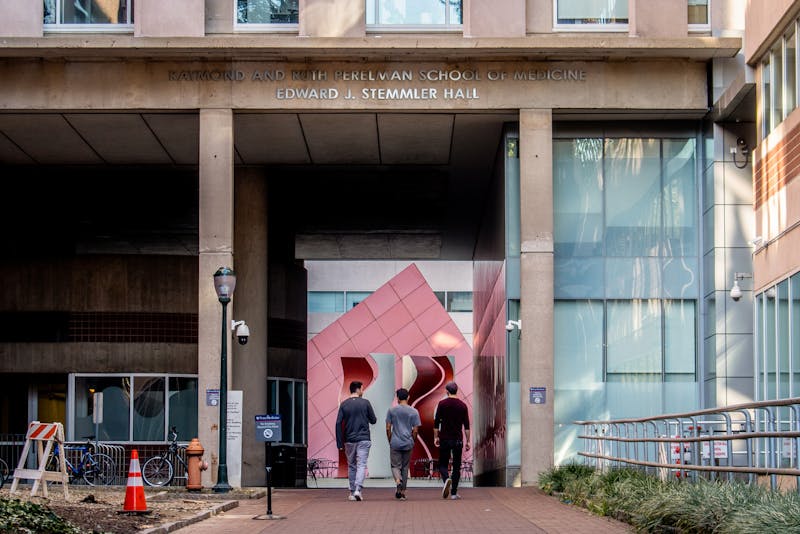
Doug Trinidad runs his hands over a 3,200-year-old sphinx.
“This is so sick,” he exclaims, as his fingers feel the engraved hieroglyphics around the base.
Trinidad is standing in the ancient palace of the Pharaoh Merneptah in the Egypt Gallery at the University of Pennsylvania Museum of Archaeology and Anthropology.
Trinidad, 20, and his classmates are visiting from Overbrook School for the Blind in Philadelphia, and are participating in one of Penn Museum’s recently launched “touch tours.”
While there would ordinarily be barriers around the ancient artifacts and guards keeping a close eye, today is an exception.
This unique tour series, called “Insights into Ancient Egypt,” allows the visually-impaired to experience six objects from the Museum’s Egyptian collection. Guests are allowed to touch any part of the object after some precautionary measures, like wiping their hands. These touch tours will run from Oct. 1 through Dec. 10, 2012.
“We aim to open up the dialogue between those who can see and those who cannot, through our shared history,” said Trish Maunder, project coordinator for special tours at Penn Museum.
Overbrook School for the Blind student Dawon James, who held a replica of a miniature bird statue in his hand, said the experience made learning history more fun.
“I can get bored sitting in a classroom,” James said.
Trinidad agreed, calling the experience “awesome.”
“I really believe aliens made some of [the artifacts],” he joked. “Just because they feel so detailed, it seems like a machine had to have made them.”
While at the sculpture of the head of Tuthmosis III, James and Trinidad remarked at how smooth the texture of the pharaoh’s face was, prompting a discussion on what ancient Egyptians used as sandpaper.
Maunder said the visually impaired guests on the tours sometimes add surprising perspectives to the artifacts.
“One guest said he could feel the ribs of the sphinx,” Maunder said. “We had to shine a flashlight to find them.”
This is not the first time Penn Museum has had special programming for the visually impaired. In 1971, the Penn Museum established the Nevil Gallery for the Blind and Sighted, in which the objects on display could be handled by visitors. According to the Penn Museum blog, the exhibit was quite popular, and included exhibits by blind artists.
However, the theft of a Sri Lankan mask in 1988 forced the museum to end the program.
Maunder said the Museum decided to restart the initiative to create a more “inclusive audience.”
Lee Schultz, an art teacher from Overbrook who was accompanying the students, said the field trip was a joint activity between the students’ history and art classes.
“We want them to look for inspiration for an art project,” Schultz said.
Elizabeth Messaros, a 19-year-old student at Overbrook, walked alongside a tour guide. The guide placed Messaros’ hand on each hieroglyphic as she explained what it meant. After a while, Messaros said she got the hang of things and was able to identify a few on her own.
“Seeing the details shows you how intelligent people can be back then,” she said. “I really enjoyed it.”
While Messaros was not sure what she would be basing her art project on, her favorite item from the gallery was the sphinx.
Maunder said the tour has received positive responses.
“We look at learning in a very one dimensional way, and there can be a multiplicative sense of learning,” Maunder said. “This exhibit is helping people learn through their sense of touch.”
The Daily Pennsylvanian is an independent, student-run newspaper. Please consider making a donation to support the coverage that shapes the University. Your generosity ensures a future of strong journalism at Penn.
DonatePlease note All comments are eligible for publication in The Daily Pennsylvanian.








